Today, I’d like to talk to you about this new topic “Are All Green Teas The Same?”. Green tea, a beloved drink enjoyed by millions worldwide, goes beyond just being a beverage and becomes a complex blend of history, culture, and sensory enjoyment. The appeal of green tea is not only its health benefits but its deep connection to nature and tradition. As we explore the variety of green tea, we discover a world where the nuances of different types of the Camellia sinensis plant come to life, with each leaf telling a unique story from plant to cup.
The journey of green tea starts with the Camellia sinensis plant, whose leaves are carefully grown and harvested to capture the essence of the earth. Each type of this remarkable plant has unique characteristics influenced by location, climate, and growing methods. Understanding these unique traits leads to a greater appreciation for the complexities that define each cup of green tea.
Behind every cup of green tea is a detailed process that turns fresh leaves into a refined drink. The art of processing green tea involves a delicate balance of tradition and innovation. From steaming and pan-firing to rolling and drying, each step is crucial in preserving the delicate flavors and vibrant colors that make green tea unique. This behind-the-scenes journey from leaf to cup showcases the dedication and expertise of tea artisans who have honed their skills over centuries.
The heritage of green tea is as rich and diverse as its flavors. Originating in ancient China, green tea has spread globally, influencing and being influenced by different cultures. Each region has embraced green tea in its own way, resulting in various varieties and preparations. Green tea offers a diverse tour of taste and tradition, whether it’s the delicate Sencha of Japan, the bold and robust flavors of Chinese Dragon Well, or the subtle nuances of Korean Nokcha.
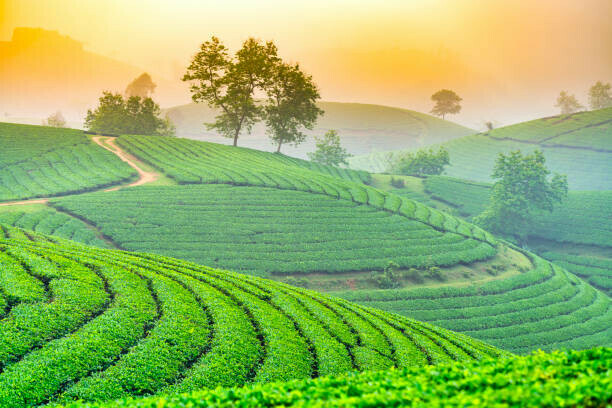
As we delve into the diverse world of green teas, we also demystify the topic of caffeine content. Contrary to popular belief, not all green teas have the same caffeine levels. Factors like the type of Camellia sinensis, the leaf part utilized, and the processing techniques all contribute to the caffeine levels in the end product. Recognizing these distinctions can aid tea lovers in making knowledgeable decisions according to their caffeine preferences.
The sensory experience of green tea is an art form in itself. Every type provides:
- A distinct flavor profile.
- Ranging from grassy and vegetal to sweet and floral.
- Even umami-rich flavors.
The scent, taste, and texture of green tea offer a sensory experience that is both calming and refreshing. Appreciating the subtle differences between varieties enhances the tea-drinking experience, turning it into a ritual of mindfulness and pleasure.
Green tea represents more than a simple drink; it pays tribute to the splendor of the natural world, the depth of tradition, and the artistry of manufacturing. By uncovering its diversity, we invite you to embark on a journey of discovery, where each cup brings you closer to the rich heritage and exquisite flavors of this timeless beverage.
The Wonders of Green Tea: From Antioxidants to Full Calmness

For centuries, green tea has been highly respected. It’s not just a calming drink; it’s also packed with health benefits and is essential for well-being. This exploration of green tea will cover its abundant antioxidants, dispel common misconceptions, and showcase its incredible journey from plant to cup. The experience involves flavor and the critical influence of green tea on our well-being and health.
One widespread misconception about green tea is that all powdered green teas are the same. This is far from true.
Matcha originates from specially grown and processed green tea leaves, a finely ground powder. Its distinct cultivation process and abundant nutrient content set it apart. Unlike other powdered green teas, Matcha requires shading the tea plants before harvest, leading to higher chlorophyll levels and increased production of amino acids. This careful process results in a vibrant green powder packed with antioxidants and other beneficial compounds, setting it apart from regular green tea powders.
Extensive scientific studies provide evidence for the health advantages of green tea. Green tea is renowned for its abundant catechins, particularly epigallocatechin gallate (EGCG), a powerful antioxidant. These catechins have been proven to fight oxidative stress, reduce inflammation, and improve heart health. Research has linked regular green tea consumption to lower cardiovascular disease risks, improved brain function, and even cancer prevention. This scientific synthesis emphasizes the significant impact of green tea on our health.
The lineage of green tea is as diverse as its health benefits. Well-known varieties such as Chinese Longjing, Japanese Gyokuro, and Korean Nokcha each come from distinct regions with unique cultivation methods and flavor profiles. These green teas are celebrated for their exquisite taste, rich cultural heritage, and health-promoting properties.

The attention given to green tea’s antioxidant content is well-deserved. The cells are protected from damage, weight loss is aided, and the antioxidants in green tea, particularly EGCG, improve metabolic health. These antioxidants aid the body in combating free radicals and volatile molecules that have the potential to harm cells and contribute to the aging process and various diseases.
Green tea is also highly valued as a wellness aid, assisting in weight loss and protecting against various diseases. Its metabolism-boosting properties make it a popular choice for those seeking to lose weight. Additionally, green tea’s anti-inflammatory and antioxidant effects contribute to its role in preventing chronic diseases, including heart disease and cancer.
Nevertheless, concerns have arisen regarding the potential for liver toxicity from green tea, especially with excessive consumption. While consuming moderate amounts is generally safe and beneficial, it is essential to be aware of the potential dangers of consuming high doses of green tea extracts. Consulting with healthcare experts and adhering to suggested consumption guidelines can reduce these risks, enabling individuals to safely experience the many advantages of green tea.
Matcha vs. Green Tea: A Connoisseur’s Comparative Guide
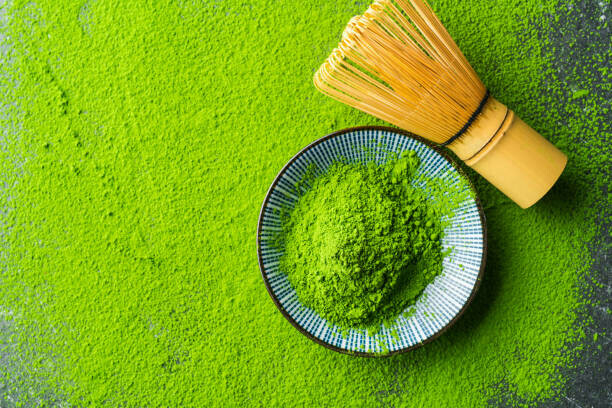
Distinguishing Matcha: Matcha, a unique type of green tea, is notable for its vibrant color and distinct preparation process. Regular green tea brewed in water differs from Matcha, a finely ground powder created from tea leaves grown in the shade. This approach preserves the intense green color and allows individuals to consume the entire leaf, maximizing the health benefits. The cultivation process, which involves careful shading before harvesting, enhances the chlorophyll content and gives Matcha its unique, slightly sweet flavor.
The distinctive experience of Matcha compared to regular green tea lies in its ceremonial preparation and consumption. Traditionally, Matcha is stirred with hot water using a bamboo whisk, resulting in a frothy, velvety beverage. This ceremonial method adds an element of mindfulness and relaxation, transforming the act of drinking tea into a meditative practice. On the other hand, regular green tea offers a more straightforward brewing process, where tea leaves are steeped in hot water for a few minutes. Both teas offer a refreshing experience, but Matcha’s preparation ritual may attract those seeking a deeper connection with their tea.
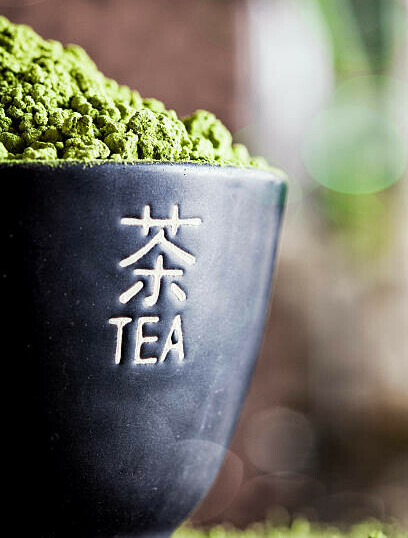
Personalized Infusions: Discovering the ideal tea blend for your palate and well-being is a unique journey. Matcha is famous for its abundant antioxidants, mainly catechins such as EGCG, which support metabolism and general well-being. It also has a notable quantity of L-theanine, an amino acid that fosters relaxation without inducing drowsiness. Regular green tea also provides numerous health benefits, including enhanced brain function, weight loss, and a reduced risk of cancer. The decision between Matcha and green tea ultimately depends on your health objectives and taste preferences. For a strong, earthy flavor and maximum health benefits, Matcha is an excellent option. If you like a milder, more subtle flavor, standard green tea is better suited to your taste.
Immersed in Tradition: The way premium teas like Matcha are produced showcases their enduring appeal. The process begins with shading the tea plants for approximately three weeks before harvesting, which elevates chlorophyll and amino acid levels. The leaves undergo steaming after harvesting, followed by drying, and then they are finely ground into a powder using granite stone mills. This meticulous process ensures that Matcha maintains its vivid color, distinct flavor, and potent health benefits. Regular green tea, while also carefully cultivated and processed, follows a less rigorous method involving steaming or pan-firing the leaves before drying and packaging. This disparity in processing contributes to the unique characteristics of each tea, making both matcha and green tea valuable additions to any tea enthusiast’s collection.
Exploring the unique characteristics of Matcha and conventional green tea allows tea enthusiasts to develop a deeper understanding of each variety’s long-standing customs and health advantages. Ultimately, they can find the ideal blend to suit their personal preferences and wellness goals.
Green or Black: Teatime’s Tale of Two Colors
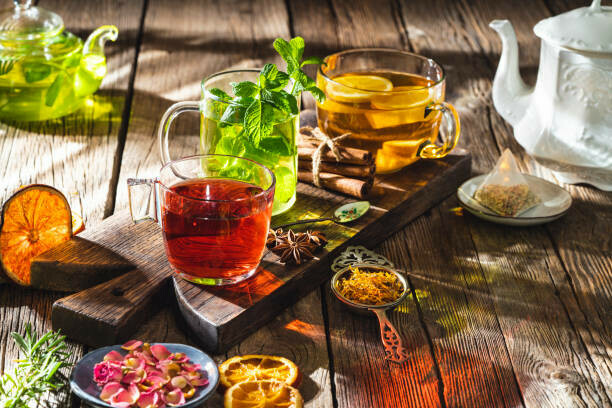
The comparison of how black and green tea are grown and processed tells an exciting story of diversity. Green tea is usually made by steaming or pan-firing fresh leaves to prevent oxidation, keeping their vibrant green color and delicate flavor intact. In contrast, black tea goes through complete oxidation, involving withering, rolling, and fermenting the leaves, which results in a dark color and intense flavor. This distinct difference in processing affects the appearance and taste and the health benefits of each type of tea.
Exploring the geographical stories of tea plantations worldwide reveals the rich heritage and unique characteristics of teas from different areas. Green tea is mainly cultivated in China and Japan, with each region offering its own varieties, such as the grassy, savory Japanese sencha or the floral, slightly sweet Chinese Longjing. Black tea originates from India, Sri Lanka, and Africa, where well-known varieties like Assam, Darjeeling, and Ceylon are produced. Each location contributes unique soil, climate, and traditional methods, enriching the tea’s flavor profile and cultural significance.

Examining the differences in appearance, flavor, and preparation of black and green teas highlights their distinct characteristics. Green tea has a light, fresh, and sometimes grassy flavor, best enjoyed without milk or sugar to fully appreciate its subtleties. Its preparation often requires lower water temperatures and shorter steeping times to avoid bitterness. On the other hand, black tea offers a stronger, more robust flavor, usually enjoyed with milk, sugar, or lemon. It needs boiling water and longer steeping times to fully develop its rich taste. These distinctions make each type of tea suitable for different preferences and occasions, offering a versatile teatime experience.
The amount of caffeine and the positive effects on health associated with green and black teas show that green tea usually contains less caffeine than black tea, making it a milder choice for people sensitive to stimulants. Green tea is well-known for its high levels of antioxidants, particularly catechins, which promote metabolism and cardiovascular health. Black tea offers many benefits due to its plentiful polyphenols, including better gut health and a lower chance of chronic diseases. Both types of tea have distinct health perks, adding value to a well-rounded diet.
Recognizing the common traditions and history of tea culture highlights the universal appreciation for this beloved beverage. Whether it’s the Japanese tea ceremony emphasizing mindfulness and harmony or the British afternoon tea tradition, tea has been a central part of social and cultural rituals for centuries. Both green and black teas have played significant roles in these traditions, connecting people across the globe through the simple yet profound act of sharing a cup of tea. By understanding and appreciating these differences and similarities, tea enthusiasts can enrich their teatime experience and enjoy the rich variety of flavors and stories each cup holds.
Steeped in Questions: Demystifying Green Tea FAQs

Investigating the beginnings and varieties of green tea entails immersing oneself in a realm rich with historical background and diverse options. Green tea originated in ancient China, where it was first found and grown over 4,000 years ago. Today, it is primarily manufactured in China and Japan, with each area offering distinct types. Chinese green teas, such as Dragon Well (Longjing) and Bi Luo Chun, are recognized for their subtle sweetness and floral aromas. In contrast, Japanese green teas, such as Matcha, Sencha, and Gyokuro, are renowned for their vibrant green color and rich umami flavors. Each type provides a unique experience, encouraging tea enthusiasts to explore and find their personal favorites.
Understanding the correct methods for storing and preparing green tea to achieve the best taste is essential for enthusiasts. Green tea’s flavors and health advantages can be maintained by storing it in a sealed container. It must be kept from light, heat, and moisture for optimal preservation. When making green tea, it is important to use water that is not too hot, ideally between 160-180°F (70-80°C), to avoid bitterness. Steep the tea for about 2-3 minutes, depending on the type and personal preference. These precise steps ensure a perfect cup of green tea, capturing its essence and delivering a rejuvenating experience.
Examining the health effects of green tea: Truth vs. Myths reveals that while green tea is often praised as a superfood, it is important to distinguish between myths and reality. The copious antioxidants found in research are linked to several health benefits, such as enhanced cognitive performance, decreased body mass, and reduced risk of chronic diseases. However, claims that green tea can cure major illnesses or cause significant weight loss overnight are overstated. Consistent consumption, combined with a balanced diet and lifestyle, is crucial for reaping its health benefits.
Addressing the concerns about radioactive elements in Japanese tea is an increasingly important topic. Following the Fukushima disaster in 2011, concerns about radioactive contamination in Japanese tea emerged. Reliable suppliers thoroughly test their products to ensure safety, and strict regulations are in place to prevent contaminated tea from entering the market. When purchasing Japanese green tea, consider certifications and trusted brands to ensure quality and safety.
Making more informed purchases: There are several important factors to consider when choosing high-quality green tea products. Always check for freshness by examining the harvest date, and choose whole leaves instead of tea bags for a superior flavor. Pay attention to the source and opt for teas from reputable regions known for high-quality production. Lastly, consider organic options to avoid pesticides and chemicals. Following these suggestions, you can enjoy the finest green tea and its numerous benefits.
I would love to receive your comments down below, in case of any.

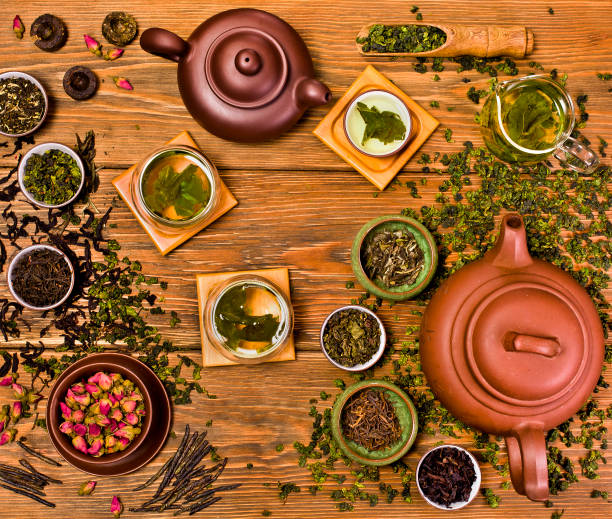
These teas certainly have become very popular of recent years and their antioxidant properties are talked about. I’m curious to know if any studies have been done on green tea to test the antioxidant effects.
I’m also curious to know how much is too much and what side effects are there from drinking too much green tea.
Hi Lyn,
It’s great to hear your interest in green tea’s antioxidant properties. Indeed, numerous studies have highlighted the potent antioxidant effects of green tea, primarily attributed to its rich content of catechins, particularly epigallocatechin gallate (EGCG). The studies have investigated different health advantages, from lowering the likelihood of specific cancers to enhancing cardiovascular health and managing weight.
Moderation is vital when it comes to how much is too much. While green tea is a healthy choice, consuming too much can lead to side effects due to its caffeine and tannin content. Excessive intake may lead to issues like jitteriness, sleep disturbances, or an upset stomach in some individuals. Consuming 3-4 cups daily is typically considered safe for most individuals, although this may differ depending on personal susceptibility to caffeine and general well-being.
If you are considering consuming more green tea or having specific health issues, seek advice from a healthcare professional to establish the appropriate quantity. Do you enjoy a particular type of green tea, or are you looking to explore different varieties?
I’ve always loved green tea, but I had no idea there was so much depth to it.
I found the part about the journey from the Camellia sinensis plant to the final cup really fascinating. It’s amazing how factors like location, climate, and growing methods can give each type of green tea its unique character. And the detailed process of steaming, pan-firing, rolling, and drying is awesome. The dedication of those tea artisans really shines through.
Overall, your article was a fantastic read. It really deepened my appreciation for green tea and I learned so much. Great job!
Hi Kavitha,
Thank you so much for your kind words and thoughtful comments. I’m thrilled you enjoyed the article and found it informative. It’s incredible how much depth and variety there is in green tea. The journey from the Camellia sinensis plant to the final cup is indeed a fascinating process, and the dedication of the tea artisans truly adds to the unique character of each type of green tea.
I’m glad you found the details about the different processing methods interesting. It’s these nuances that make exploring green tea so rewarding. Please let me know if you have any more questions or topics you’d like to see covered. Thanks again for your lovely comment and support.
Article was incredibly enlightening! I had no idea there were so many varieties of green tea, each with its own unique flavour profile and health benefits. The explanation about how different processing methods affect the taste and caffeine content was particularly interesting. It also clarified a lot about Matcha versus regular green tea. This definitely changes how I view my daily cup of tea.
Hi Kaleem,
I’m thrilled you found the article enlightening and gave you a new perspective on your daily cup of tea. Isn’t it fascinating how the diversity in processing methods can so significantly influence flavor, caffeine content, and health benefits?
Matcha and regular green tea can offer such unique experiences if you’re exploring different varieties.
Are there any particular types of green tea you’re excited to try next?
Thank you for sharing your thoughts, knowing the content resonated with you is always rewarding.
Hi Sara,
Your article is an enlightening exploration of the diverse world of green tea. I particularly enjoyed how you delved into the historical and cultural significance of green tea, showcasing its journey from the Camellia sinensis plant to our cups. Your detailed descriptions of the different processing methods and their impact on flavor and caffeine content were fascinating. The comparison between Matcha and regular green tea, along with the nuanced differences between green and black teas, provided a comprehensive understanding of each variety. Your emphasis on the health benefits, backed by scientific studies, added depth and credibility to the piece. Overall, your article beautifully highlighted the complexity and richness of green tea, making it accessible and engaging. Thank you for sharing your profound knowledge and insights. One question I have is, do you have a personal favorite type of green tea or a particular way you like to prepare it?
Hi Annastasia,
Thanks so much for reading and the thoughtful feedback.
I am happy that you liked the article and it was informative for you; there is so much history around green tea as varieties. With my personal favourite being Matcha, because I am addicted to its bright colour and wide range of flavors.
When I want the traditional bamboo whisk experience, I make it that way but every now and then there is nothing wrong with dumping a scoop or two into your morning smoothie for all of those health benefits so fast.
What about you? What is your favorite green tea or the preparatory method. I’d love to hear.